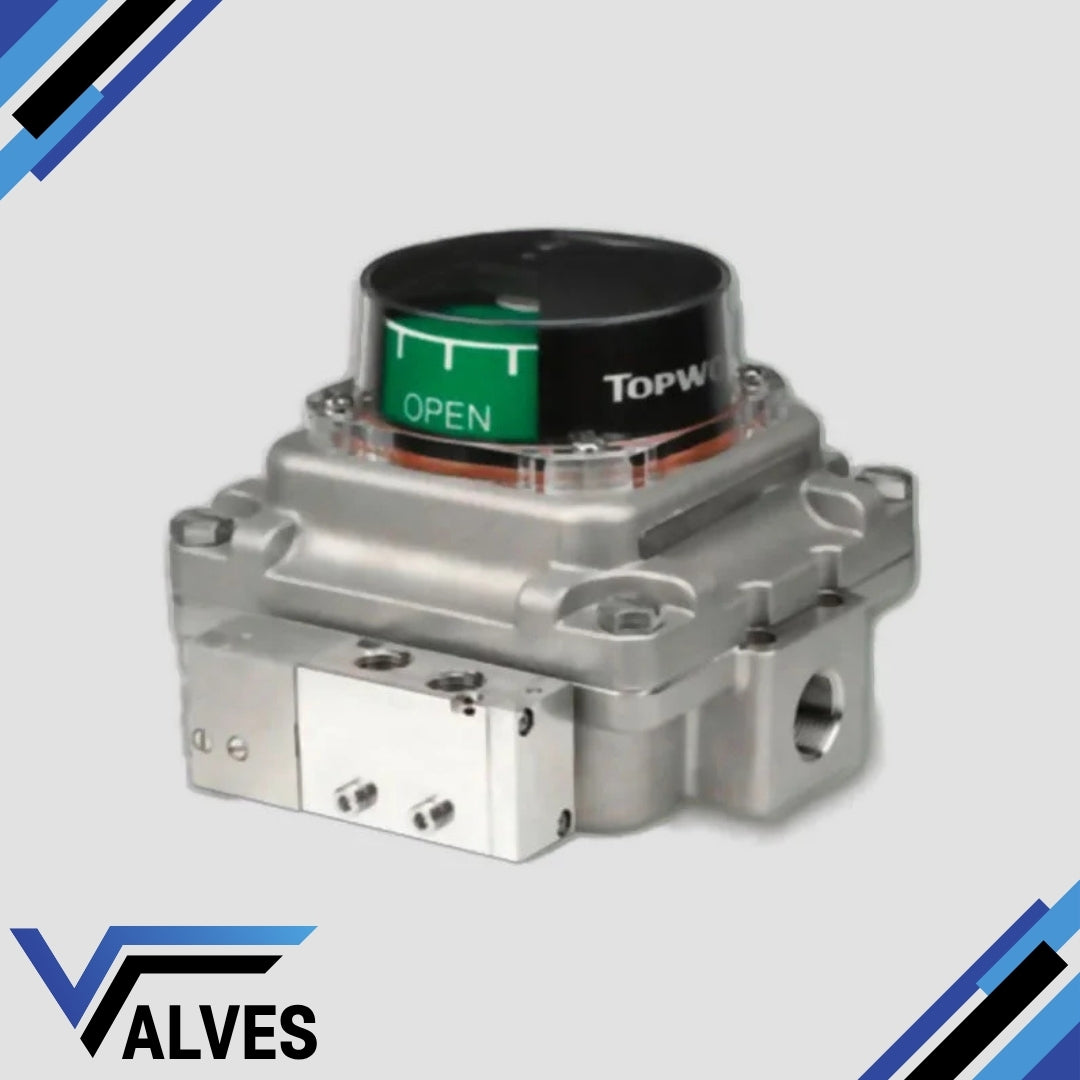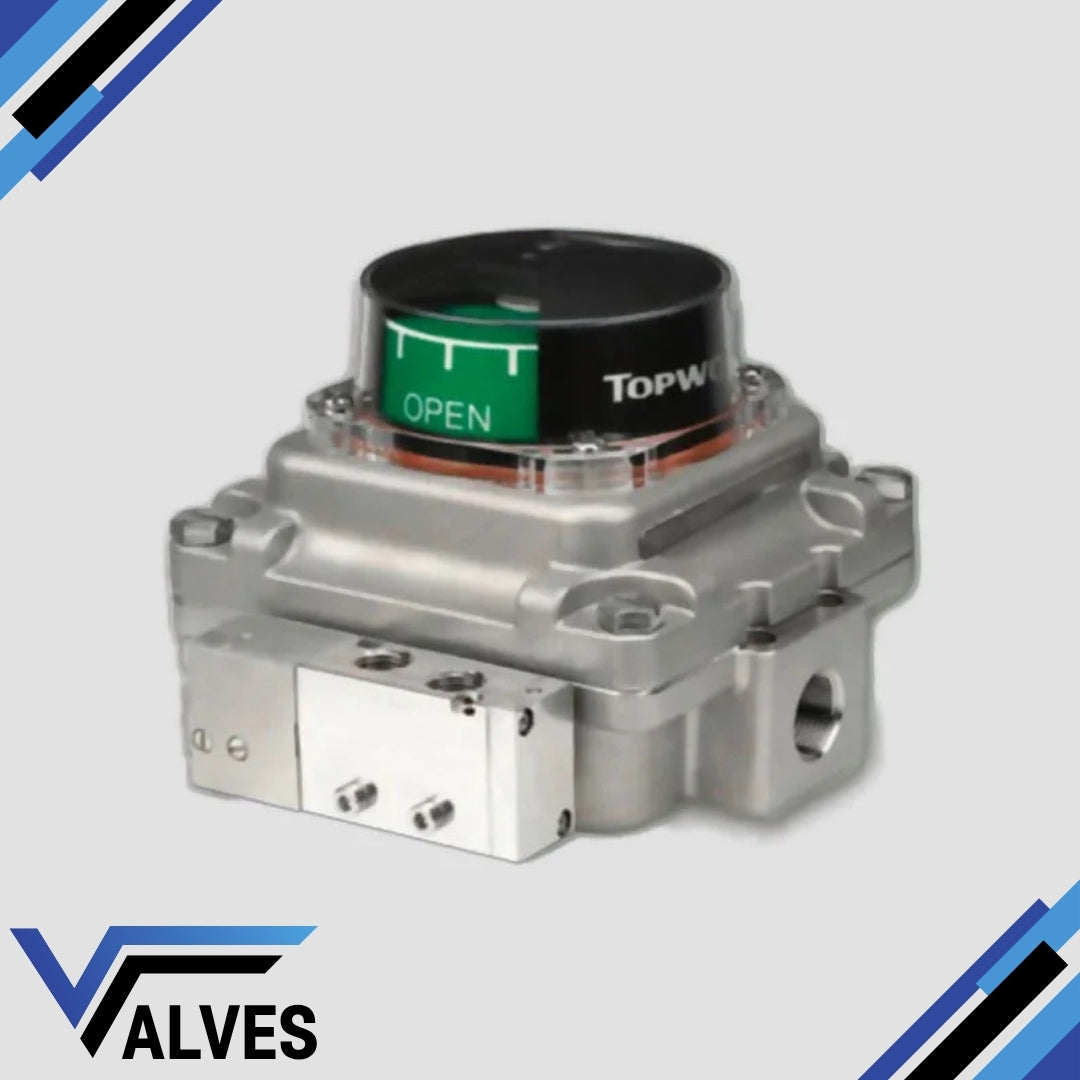Topworx Switchboxes
TopWorx Limit Switch Box TXS-AS1GLMM Valve Monitor
TopWorx Limit Switch Box TXS-AS1GLMM Valve Monitor
Couldn't load pickup availability
The TXS-AS1GLMM Valve Monitor ensures efficient plant operation through precise valve monitoring and control. It supports a variety of communication protocols, including AS-Interface (AS-i), providing seamless integration into automated systems. Its rugged construction makes it ideal for use in hazardous and extreme environments.
Key Features:
- AS-Interface Communication: Integrated AS-i communication allows for simplified wiring and enhanced data sharing between devices, improving plant efficiency.
- Compact Design: Its small footprint enables installation in tight spaces without compromising performance.
- Durability: Built to withstand harsh conditions, including exposure to dust and water, with an IP66/67 rating.
- Flexible Configuration: Offers multiple switch and sensor options to cater to diverse applications.
- Global Certifications: Certified for use in hazardous areas, ensuring compliance with international safety standards.
Additional Information
The TopWorx TXS-AS1GLMM is designed to reduce downtime by providing accurate and real-time valve position feedback. This not only improves operational efficiency but also enhances safety in process control. Its flexibility and durability make it a valuable component for managing critical systems in sectors such as energy, manufacturing, and processing industries.
Share

FAQ's
What is the difference between a valve and an actuator?
What types of actuators are available?
The main types of actuators are:
Pneumatic actuators – use compressed air for fast, reliable operation.
Electric actuators – use electrical power for precise control.
Hydraulic actuators – use fluid pressure for high-torque applications.
Each type offers unique advantages depending on the environment, media, and system control needs.
How do I choose the right actuator for my valve?
To select the correct actuator, consider:
Valve type and torque requirement
Power source available (air, electric, or hydraulic)
Operating environment (temperature, humidity, hazardous area)
Control signal type (on/off or modulating)
Matching actuator torque and compatibility with the valve’s ISO mounting ensures reliable performance.
What are the main types of valves used in automation?
The most common valves in automated systems include:
Ball valves – for tight shutoff and quick operation.
Butterfly valves – for larger flow control with compact design.
Globe valves – for precise throttling and flow regulation.
Check valves – to prevent backflow.
Gate valves – for full bore flow isolation.
What’s the difference between a double-acting and spring-return actuator?
Double-acting actuators use air (or power) to both open and close the valve.
Spring-return actuators use air to open (or close) the valve, and a built-in spring to automatically return it to a safe position when power or air is lost — ideal for fail-safe operation.
How often should valves and actuators be serviced?
Regular maintenance intervals depend on operating conditions, but a good rule of thumb is to inspect every 6–12 months.
This includes checking for leaks, lubrication, seal wear, and actuator responsiveness to prevent unexpected downtime.

